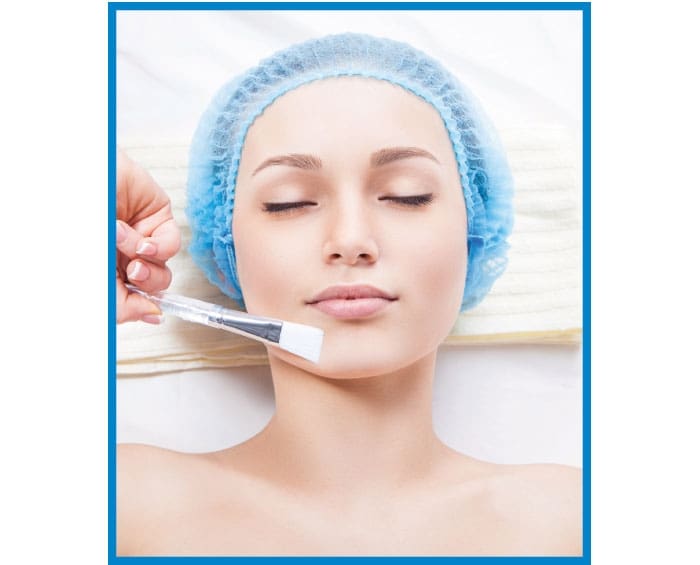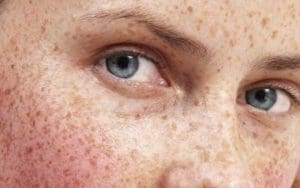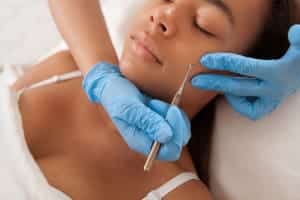
In our zealousness to incorporate new modalities into client treatments, skin care professionals often ask, “Which modalities can I combine with chemical peels?” However, the questions that professionals should ask themselves instead are:
- What is the safest and most effective way to achieve my client’s desired result?
- Is a combination therapy appropriate?
In today’s society, most clients want instant gratification and we, as professionals, sometimes feel compelled to combine modalities, believing that we will obtain quicker results. However, we now realize that oftentimes less is more. Inducing excessive amounts of inflammation extends the wound healing process and accelerates aging. Understanding the wound healing process enables us to select the most appropriate treatment plan for our clients.
WHAT STARTS THE WOUND HEALING PROCESS?
Chemical peels exfoliate the outer layers of the skin, including the stratum corneum, various layers of the epidermis, reticular dermis, and dependent on peel depth, the papillary.
Chemexfoliation is the process where an intentional controlled burn, with a chemical peeling agent, initiates the wound healing cascade. The wound healing cascade completes with the collagen remodeling process, providing skin rejuvenation. We know that we want to stimulate collagen production, but how do we do that? We will begin by examining what happens within the skin each time we apply a chemical peel.
Wound healing is the body’s natural response to injury. The inflammation cascade is a complex cascade of cellular events or phases that generates resurfacing, repair, and restructuring of damaged skin by restoring its integrity. Each phase overlaps the other as part of an intricate cycle. The following description is a simplified version of a very elaborate process. The process begins as a catalyst (skin trauma) and triggers the following cascade of events.
The First 24 Hours
Circulation to the peeled surface increases during a controlled partial thickness injury, such as a chemical peel, accounting for the skin’s redness. Traumatized cells send out signals through chemical inflammatory mediators to the immune system. Vasoconstriction (narrowing of the blood vessel) occurs, resulting in protein coagulation – a temporary frosting or blanching of the skin. Next, during vasodilation (blood vessel widening mediated by histamine), blood platelets release chemical messengers called cytokines, prostaglandins (hormone like substances), and polypeptide growth factors (see chart below) that initiate the inflammation cascade.
Growth Factors Released by Blood Platelets:
- Epidermal Growth Factor (EGF) stimulates endothelial cell growth and wound healing.
- Transforming Growth Factor Beta stimulates the growth of epithelial and vasular endothelial cells, which promotes wound healing.
- Keratinocyte Growth Factor (KGF) stimulates keratinocyte production.
- Platelet Derived Growth Factor (PDGF) promotes cellular growth, new growth and repair of blood vessels, and collage production.
- Fibroblast Growth Factor (FGF) initiates tissue repair, cellular growth, collagen, hyaluronic acid, and elastin production.
- Vascular Endothelial Growth Factor (VEGF) aids in the promotion of endothelial cells, angiogenesis, and wound healing.
24 to 72 Hours
Inflammation Cascade: The inflammation cascade is a series of chemical reactions that occur when the skin becomes irritated or inflamed. During this phase, inflammatory cells, including neutrophils, follow the cytokines from the blood vessels to the site of the peeled surface. The skin may be red, hot, and sensitive.
Neutrophils and cytokines also send messages to the fibroblast cells, to secrete epidermal and vascular growth factors in the extra-cellular-matrix of the dermis, stimulating cell proliferation. The fibroblast cells differentiate (split through mitosis to become a new cell) into myofibroblasts, which contract in the area of damaged tissue and are responsible for skin tightening. The inflammatory response peaks at 48 hours.
72 Hours to 14 Days
Cell proliferation: Epithelialization, fibrous tissue formaformation of new blood vessels and endothelial cells) occur during this phase.
Erythema following a chemical peel signifies endothelial capillary growth.
Reepitheliazation (regeneration of the epidermis) completes in five to 14 days after the trauma. Keratinocyte cells migrate to the site of injury, replacing the damaged cells, and fibroblast cells secrete Type 3 collagen to restrengthen the dermis.
Two Weeks to Several Months
Collagen Remodeling: Type 3 collagen replaces the thicker and stronger Type 1, forming tight cross-hatching with other collagen fibers after 14 to 15 days. This process continues through days 20 to 21. The new skin integrity lasts for several weeks to several months. Collagen production normally peaks after six months, balanced by collagen degradation through the enzyme collagenase.
It is important to note that the depth of the controlled burn directly correlates to the level of healthy tissue replacement. To lift dermal melasma and/or to produce effective collagen remodeling, the skin care professioanl must reach the dermis.
Now that we understand the process, let us answer some questions:
- Even though exfoliation may be complete in as few as three to five days, has the wound healing process completed? No. The minimal wound healing process occurs at approximately three weeks.
- Do we want to continue to disrupt the healing process by inducing new inflammation in the form of a new modality? No. The stronger Type 1 collagen does not replace Type 3 collagen until two or three weeks into the wound healing process.
- Is introducing a new treatment prior to completing the wound healing process truly in the best interest of obtaining our clients skin health goals? No. Interruptions prior to Type 3 collagen remodeling into tight linking formations will degrade skin function.
- How long is an acceptable time to wait to retreat with a new peel or adjunct modality? It is typically best to wait four to six weeks. By that time, collagen remodeling has taken place, skin integrity is restored, and inflammation is no longer present.
- Considering that collagen remodeling begins at two to three weeks, should an acne-scarred client be treated at two-week intervals? Yes, for true textural scarring; however, post-inflammatory pigmentation produced by previous acne lesions is not considered scarring. It is simply a form of hyperpigmentation. Suggested hyperpigmentation treatments vary from three to six week intervals.
MODALITY TREATMENTS
Let us explore some of the modalities available and consider which may be appropriate combination treatments to chemical peels and which are better as adjunct treatments.
Dermaplaning and Microdermabrasion: Dermaplaning or microdermabrasion prior to peeling causes the peel to penetrate more deeply than its intended use. These combinations can be safe while using a superficial peel and when following approved protocols. Commonly suggested guidelines are a light dermaplaning or one pass of microdermabrasion on a low setting. Overzealous microdermabrasion prior to peeling can result in uneven peel penetration and post-inflammatory hyperpigmentation.
Medium depth chemical peels penetrate to the papillary dermis. Do you want to risk deeper penetration by dermaplaning or microdermabrading? The deeper the peel penetrates, the greater the potential for scarring, post-inflammatory hyperpigmentation, and infection.
Ultrasound: Ultrasound is a non-ablative procedure that emits high frequency soundwaves that penetrate deeply into the tissue while the skin remains intact. Ultrasound strengthens collagen fibers, increases circulation, and stimulates fibroblast cells to produce dermal matrix proteins such as collagen and elastin.
Phonophoresis or sonophoresis uses ultrasound waves to push topical products deeply into the skin to produce optimal results. It is an effective addition for addressing anti-aging, pigmentation, and acne. Ultrasound is safe to use prior to certain superficial chemical peels. Check with the peel manufacturer as to which peels may follow ultrasound and review the protocol before treating the client. Many times the manufacturer will reduce the amount of peel layers or time on the skin when used as a combined treatment modality. Ultrasound increases product permeability and will likely incur deeper peel penetration. Ultrasound treatments, prior to medium depth peels, are not appropriate. The skin care professional should never use ultrasound to force in any peel solution.
Many medical practices are using ultrasound technology, combined with imaging, as a non-invasive method for facial and body rejuvenation through neocollagenesis (skin tightening). During treatment, the client feels small amounts of energy deposited to the treatment areas. Any erythema usually fades within a few hours, while edema may persist for up to 72 hours. Tenderness or bruising in the treated area can last two to 14 days. The professional must understand that inflammation, although not always visible, may still be present in the skin.
Due to the collagen remodeling process, skin-tightening results are evident two to three months post procedure. The safest protocol with ultrasound/imaging treatments is as an adjunct treatment, allowing four to six weeks between procedures. Remember, the wound healing process takes approximately 21 days in the initial cycle. You do not want to impede the collagen remodeling process by introducing a new treatment too soon.
Microneedling: Microneedling is a procedure that uses a skin-needling device to penetrate the skin at various levels, creating hollow channels through the epidermis and/or dermis. The procedure initiates the wound healing response to stimulate new collagen and elastin. It also provides deeper product penetration, through the newly created channels, enabling ingredients with large molecules to penetrate deeper into the lower levels of the epidermis or even the dermis.
The professional should not push lipids or fatty acids through these channels, as they can produce foreign tissue granulomas and systemic hypersensitivity.Most manufacturers would not recommend pushing a chemical peel through these open channels. Chemical peels should penetrate from the stratum corneum rather than the lower epidermis or even papillary dermis. Microneedling and chemical peels produce better results as adjunct treatments four to six weeks apart.
Intense Pulsed Light Therapy (IPL): IPL therapy uses a broadband diffuse (scattered) light to target pigment or vascular concerns. IPL targets the intended chromophore (a colored chemical in blood, pigment, or hair), then destroys it with heat. Heat sources are not appropriate in combination with any chemical peel; heat can induce blistering and post-inflammatory hyperpigmentation. IPL should be an adjunct therapy used four to six weeks before or after a peel for anti-aging and at least four weeks before or after a peel when treating hyperpigmentation.
Light Emitting Diode (LED): LEDs convert low-level electrical energy into diffused light energy. Amber and red LEDs stimulate collagen productivity, while red and infrared light reduces inflammation and accelerates the wound healing process by stimulating cell growth and proliferation. LEDS can reduce wound healing rates by up to 50 percent, according to a National Aeronautics and Space Administration (NASA) study. Although the LEDs themselves do not technically drive heat into the skin, the unit’s resistors do. For that reason, consider using LEDs three to four days post peel to calm excessive inflammation.
Director of Global Education for Vitality Institute Medical Products, Brenda Linday, L.E., L.E.I. has over 12 years of experience in the medical aesthetic industry. She is an industry author and has trained hundreds of skin health professionals worldwide on safe and effective chemical peeling techniques while instilling the importance of credibility, valuing lasting client relationships, and showing skin care professionals how corrective and preventative skin care can truly improve a client’s life.

























0 Comments